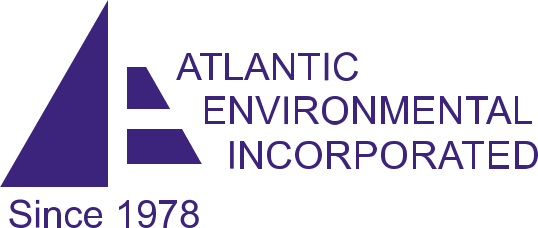If you need ventilation testing discussed in this article, call us at 973-366-4660 or e-mail us at info@atlenv.com for details and a free estimate.
Written By: Robert E. Sheriff, MS, CIH, CSP, President
April 5, 2020
Ventilation Testing
How Much Air Is Moving Through Your Building?
It is important for most commercial operations whether office, commercial, hospital, health care facility, public buildings, warehouse or industrial locations to determine if the ventilation system is operating as it should and within the Air Exchange Rate Guidelines.
There are two principal approaches to ventilation testing:
- For human occupancy, ASHRAE has set recommended air volumes based upon the number of occupants in the building. It is titled ASHRAE Standard 6.2.1, Ventilation for Acceptable Indoor Air Quality.
- The other method is to determine the air changes per hour (ACH) for different types of activity. For example, The Engineering ToolBox (engineeringtoolbox.com) has identified recommended ACH’s for various types of buildings/rooms.
| Banks | |
|---|---|
| Boiler Rooms | 15 – 20 |
| Classrooms | 6-20 |
| Computer Rooms | 15-20 |
| Engine Rooms | 4-6 |
| Factory Buildings | 10 – 15 |
| Foundries | 15-20 |
| Hospital Rooms | 4 – 6 |
| Libraries | 4 |
| Lunch Rooms | 12-15 |
| Machine Shops | 6 – 12 |
| Medical Clinics | 8 – 12 |
| Paper Mills | 15-20 |
| Municipal Buildings | 4 – 10 |
| Museums | 12-15 |
| Private Offices | 4 |
| Police Stations | 4-10 |
| Post Offices | 4-10 |
| Retail Stores | 4 – 12 |
| Paint Shops | 15 – 20 |
| Theaters | 8-15 |
| Warehouse | 2 |
There are several ways to measure ACH.
- Measure actual supplied air and/or exhaust air using an airflow measuring device (the most common are a velometer or thermo-anemometer).
- Another method is by using a tracer gas injected into the supply system—or space itself and measure the reduction in tracer gas over a fixed time. The most common gas to use is sulfur hexafluoride (SF6) since it is relatively non-toxic (OSHA PEL is 1,000 ppm) and is not naturally present in the air so it is easy to detect. Also, most instruments for detection of FS6 can give readings in the parts per billion (ppb) range and some instruments are capable of measuring in the parts per trillion range. ASTM (American Society of Testing and Materials) has established a method for determining airflow using tracer gas – ASTM E741-11.
There are simple formulas for calculating the ACH for either the direct airflow method or the tracer gas method (to be presented and discussed in later articles).
In commercial industrial buildings, generally, the most practical method is to use tracer gas. A tracer gas can be injected into the air supply system or just released into the air. Upon reaching a stable level, the measurements and times can be easily recorded.
Measurement of actual airflows in buildings is more difficult because of difficulty in measuring all the air intakes and exhaust points which are often spread out, in high ceilings, or a large number of test points. The Use of a tracer gas-only involves reliance on the tracer gas at an air intake or even within the building itself. The only real issue is to allow the tracer gas time to be evenly distributed throughout the building before taking the “start” test.
Other uses for tracer gas measurements.
- They can be used to test the effectiveness of individual supply or exhaust systems.
- They can measure if exhaust air is being re-entrained back into the building.
- As a leak detector in both open and closed systems.
In a later presentation, the exact methods of testing and the formulas for calculating ACH will be discussed.
For more information contact Atlantic Environmental.
Our primary service areas for Ventilation Testing are: New Jersey NJ, New York NY, (New York City), Pennsylvania PA, Connecticut CT, Delaware DE, Massachusetts, (Boston) MA, Rhode Island RI, Washington DC, Wisconsin WI, Maryland MD, Michigan MI, Illinois (Chicago) IL, Virginia VA, Indiana IN, Georgia (Atlanta) GA, Alabama AL, North Carolina NC, South Carolina SC, Tennessee TN, Texas (Dallas, Ft Worth) TX, Oklahoma OK, DC, Arkansas AR, Florida FL. We can service most other areas of the U.S. but with some added travel charges.



